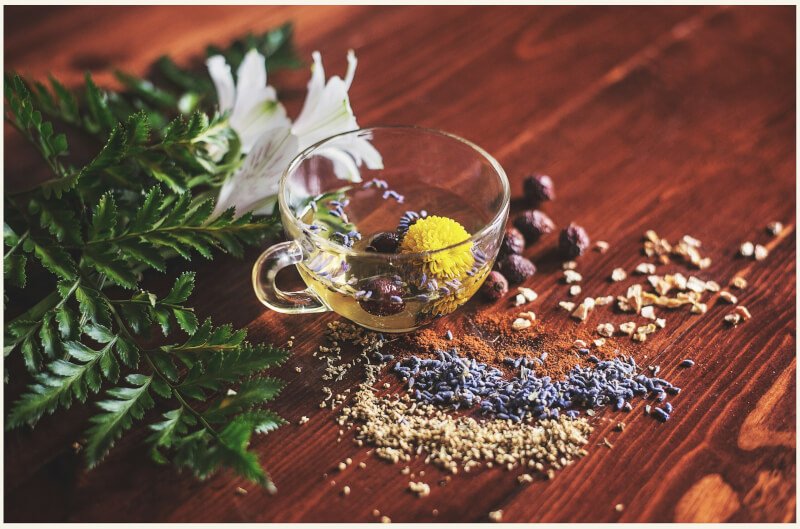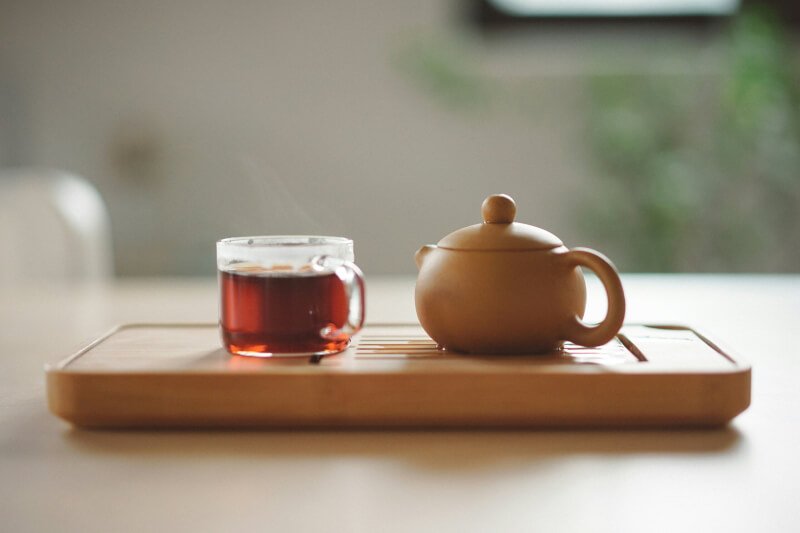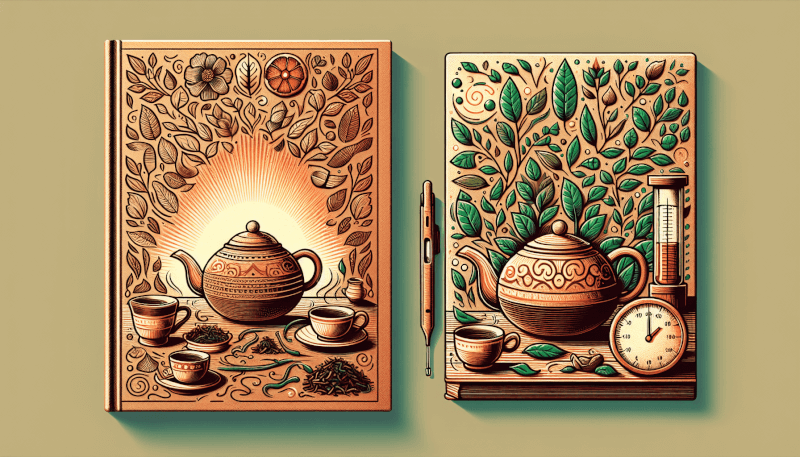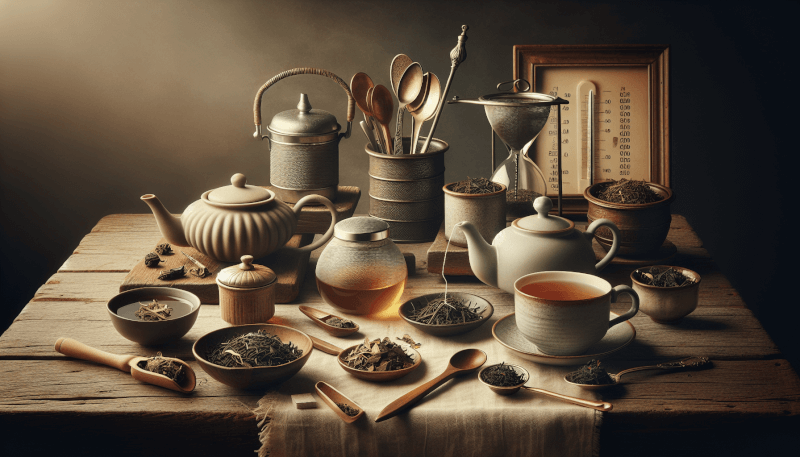Tea Brewing 101: Mastering The Basics is your ultimate guide to becoming a tea aficionado. From understanding the different types of tea to unlocking the art of steeping, this article will take you on a delightful journey through the essentials of brewing the perfect cup. Whether you’re a tea enthusiast or a beginner eager to explore the world of tea, this comprehensive article will equip you with the knowledge and techniques needed to truly savor this ancient beverage. So grab your favorite mug, relax, and let’s embark on a tea brewing adventure together!
Types of Tea
Tea is a wonderful and versatile beverage that comes in many different flavors and varieties. Here, we will explore the five main types of tea: black tea, green tea, oolong tea, white tea, and herbal tea.
Black Tea
Black tea is the most popular type of tea around the world, known for its robust and bold flavors. It undergoes a complete oxidation process, resulting in its dark color and strong taste. Black tea is often enjoyed with milk and sugar, but it can also be enjoyed on its own or with a slice of lemon for a citrusy twist.
Green Tea
Green tea is beloved for its light and refreshing flavor, as well as its potential health benefits. Unlike black tea, green tea is unoxidized, which gives it a more delicate taste. This type of tea is often enjoyed without any additives, allowing the natural flavors to shine through. It can be a great choice for those looking for a caffeine boost without the jitters.
Oolong Tea
Oolong tea is a middle ground between black tea and green tea. It undergoes a partial oxidation process, resulting in a unique flavor profile that is both floral and fruity. Oolong tea can vary greatly in terms of taste, ranging from light and floral to dark and roasted. It is often enjoyed on its own, without any additional ingredients.
White Tea
White tea is the least processed type of tea, and it is known for its delicate and subtle flavors. It is made from the young leaves and buds of the tea plant, which are carefully dried to preserve their natural flavors. White tea often has a slightly sweet and floral taste, making it a popular choice for those looking for a more gentle and nuanced cup of tea.
Herbal Tea
While herbal tea is not technically a true tea (as it does not come from the Camellia sinensis plant), it is still widely enjoyed for its soothing and aromatic properties. Herbal teas are made from a variety of plants, such as chamomile, mint, and hibiscus, and they come in a wide range of flavors and aromas. Herbal teas are often caffeine-free, making them a great choice for those looking to unwind in the evening.
Water Temperature
The temperature of the water used to brew tea plays a crucial role in determining the flavor and strength of the final cup. Different types of tea require different water temperatures for optimal brewing, so let’s explore the ideal temperatures for each type.
Boiling Water
Boiling water, at a temperature of 212°F (100°C), is commonly used for brewing black tea. Its high temperature helps to extract the bold flavors and rich color from the tea leaves, creating a robust cup of tea. Simply bring the water to a rolling boil and pour it over the tea leaves, allowing them to steep for the recommended time.
185°F (85°C) – 195°F (90°C)
Green tea is best brewed at slightly lower temperatures to avoid extracting any bitter flavors. The ideal range for green tea is typically between 185°F (85°C) and 195°F (90°C). Bringing the water to a boil and then letting it cool for a few minutes should result in the perfect temperature for your green tea.
170°F (75°C) – 185°F (85°C)
Oolong tea requires a slightly higher temperature than green tea but lower than boiling water. A temperature range between 170°F (75°C) and 185°F (85°C) is often recommended for a balanced and full-bodied oolong tea. Experimentation with different temperatures can help you find the ideal temperature that suits your preference.
160°F (70°C) – 180°F (82°C)
White tea, being the most delicate of all teas, benefits from a lower brewing temperature to preserve its subtle flavors. Aim for a temperature range between 160°F (70°C) and 180°F (82°C) when brewing white tea. Gentle heat will coax out the delicate aroma and nuances of this tea without overpowering it.
Sub-boiling Temperature
Herbal teas can be brewed at a sub-boiling temperature, around 200°F (93°C), without any detrimental effects. Since herbal teas are not made from tea leaves, they do not require the same level of precision when it comes to water temperature. As long as the water is hot enough to extract the flavors from the chosen herbs and spices, it will make for a delightful herbal tea experience.

Tea Brewing Equipment
To brew the perfect cup of tea, you’ll need the right tools. Here are some essential tea brewing equipment that will help you create a wonderful tea-drinking experience.
Tea Kettle
A tea kettle is a must-have for any tea enthusiast. It is used to boil water quickly and efficiently, providing the hot water needed for brewing tea. Choose a kettle with a whistle or temperature control features to ensure that you can easily achieve the desired water temperature.
Teapot
A teapot is a classic and elegant vessel for brewing and serving tea. It allows the tea leaves to infuse with the hot water, creating a flavorful brew. Teapots come in various materials like porcelain, glass, and clay, each offering unique benefits. Consider investing in a teapot that suits your personal style and brewing needs.
Infuser/Strainer
An infuser or strainer is essential for containing and filtering the tea leaves or herbs during the brewing process. It can be a small mesh basket that fits inside a teapot or a ball-shaped infuser that hangs from the rim of a cup. Choose a strainer that is easy to use and clean for a hassle-free brewing experience.
Tea Cups/Mugs
Having a set of beautiful tea cups or mugs adds to the overall enjoyment of drinking tea. Look for cups that are comfortable to hold and have ample capacity to hold the desired amount of tea. Whether you prefer delicate porcelain cups or sturdy ceramic mugs, find a style that suits your taste and enhances your tea-drinking experience.
Timer or Stopwatch
Timing is crucial when it comes to steeping tea. Over-steeping or under-steeping can greatly impact the flavor of the final brew. A simple timer or stopwatch will help you keep track of the steeping time and ensure that your tea is perfectly brewed every time.
Thermometer
A thermometer is especially useful when brewing delicate teas that require specific water temperatures. By accurately measuring the water temperature, you can achieve the desired flavor and avoid any bitterness or astringency. Look for an instant-read thermometer that is quick and easy to use.
Measuring Tea
Properly measuring your tea is essential for achieving consistent and delicious brews. Let’s explore different techniques and measurements for measuring tea.
Teaspoons vs. Grams
The two most common ways to measure tea are using teaspoons or grams. While teaspoons are a convenient option, they may not always provide precise measurements. Using a kitchen scale and measuring by grams can offer more accuracy and consistency in your brewing. Experiment with both methods and determine which works best for you and your preferred tea.
Standard Measurements
As a general guideline, the recommended ratio for tea is about 1 teaspoon (2 grams) of loose tea per 8 ounces (240 mL) of water. However, the optimal amount can vary depending on the type of tea and personal preference. Use this as a starting point and adjust the quantity based on your desired strength and flavor.
Experimenting with Ratios
One of the joys of tea brewing is the ability to experiment with different ratios and discover new flavors. If you prefer a stronger cup of tea, try increasing the amount of tea leaves while keeping the water quantity constant. Conversely, if you prefer a milder cup, reduce the amount of tea leaves. Have fun exploring the different possibilities and finding your perfect brew.

Steeping Time
The steeping time of tea determines the strength and flavor profile of the brew. Each type of tea has its own recommended steeping time, so let’s dive into the specifics.
General Guidelines
As a general rule, lighter teas like green and white teas require shorter steeping times, usually between 2 to 3 minutes. Medium-bodied teas like oolong tea usually require 3 to 5 minutes, while bold teas like black tea can be steeped for 4 to 6 minutes. Herbal teas often benefit from longer steeping times, ranging from 5 to 10 minutes.
Black Tea
Black tea typically needs a longer steeping time to bring out its full flavor. Steep black tea leaves for about 4 to 6 minutes to achieve a strong and robust cup. Remember that steeping beyond the recommended time can result in a bitter taste, so be mindful of the clock.
Green Tea
Green tea is best brewed for a shorter duration to prevent any bitterness or astringency. Steep green tea leaves for about 2 to 3 minutes to enjoy its delicate and refreshing flavors. Experimentation with steeping times can help you find the perfect balance that suits your taste.
Oolong Tea
Oolong tea falls in between black tea and green tea in terms of steeping time. The ideal steeping time for oolong tea is usually around 3 to 5 minutes. Adjust the steeping time based on the specific oolong tea you are brewing and your personal preference for flavor intensity.
White Tea
White tea requires a gentle steeping to preserve its delicate flavors. Steep white tea leaves for about 2 to 3 minutes to enjoy its subtle and nuanced taste. Remember that white tea can be more forgiving if slightly oversteeped compared to green or black tea.
Herbal Tea
Herbal teas can generally be steeped for longer periods to fully extract their flavors. Steep herbal teas for about 5 to 10 minutes to enjoy the full-bodied concoctions. Experimentation with steeping times can help you find the perfect balance that suits your taste and brings out the desired flavors.
Proper Water-to-Tea Ratio
Finding the ideal water-to-tea ratio is another essential aspect of brewing a perfect cup. Let’s explore how different tea types and personal preferences can affect this ratio.
Different Tea Types
The water-to-tea ratio may vary depending on the type of tea you are brewing. In general, for black, oolong, and herbal teas, a ratio of 1 teaspoon of tea per 8 ounces (240 mL) of water is a good starting point. For green and white teas, you may want to use slightly less tea, such as 1 teaspoon of tea per 6 ounces (180 mL) of water. Adjust the ratio according to your personal taste and desired strength.
Personal Preference
Everyone has their own taste preferences when it comes to tea strength and flavor. Some people enjoy a more robust cup, while others prefer a milder brew. Play around with the water-to-tea ratio to find the perfect balance that suits your individual preferences. Remember to take notes during your brewing experiments to replicate your favorite cups consistently.
Experimentation
Having the freedom to experiment with the water-to-tea ratio is one of the joys of brewing tea. If you find that a particular tea is too strong, try reducing the amount of tea leaves while keeping the water quantity constant. If you prefer a stronger cup, increase the amount of tea leaves. Embrace the journey of discovering your personal tea brewing preferences and enjoy the process of experimentation.

Tea Brewing Techniques
Tea brewing techniques are as diverse as the types of tea available. Let’s explore two popular methods: Western style and Gongfu style.
Western Style
Western style brewing is characterized by using a larger amount of water and a longer steeping time. This method is commonly used for black tea and herbal tea. Simply add the desired amount of tea leaves to a teapot or infuser, pour hot water over them, and allow them to steep for the recommended time. This approach yields a larger quantity of tea, perfect for enjoying multiple cups or sharing with others.
Gongfu Style
Gongfu style brewing originated in China and is known for its precise measurements and shorter steeping times. This method is often used for oolong tea and involves multiple quick infusions of concentrated tea. The tea leaves are typically steeped in a small teapot or gaiwan, using a high leaf-to-water ratio. Gongfu style brewing allows for a more intimate and focused tea-drinking experience, highlighting the unique flavors of the tea.
Water Quality
While selecting the right water may seem trivial, it can greatly impact the taste and quality of your brewed tea. Here are some considerations when it comes to water quality for tea brewing.
Filtered Water
Using filtered water can help remove any impurities and chemical additives that may affect the taste of your tea. Tap water may contain chlorine or other minerals that can alter the flavor profile. Investing in a water filter or using filtered water can result in a cleaner and more enjoyable cup of tea.
Spring Water
Spring water is often favored by some tea connoisseurs for its purity and mineral content. The natural minerals in spring water can enhance the flavor and complexity of the tea. Experiment with different types of spring water to find the one that complements your favorite teas best.
Avoid Distilled Water
Distilled water, while pure, lacks the minerals and natural elements found in other water sources. Without these minerals, tea brewed with distilled water can taste flat and dull. Avoid using distilled water for tea brewing unless you are deliberately looking for a neutral base to showcase the precise flavors of a particular tea.

Flavoring and Additives
Tea can be enjoyed as is, but sometimes adding flavorings and additives can enhance the taste or add a unique twist. Let’s explore some popular options for flavoring and enhancing your tea experience.
Lemon
Adding a slice of lemon to your cup of tea can provide a refreshing and tangy flavor. Lemon pairs well with black tea, green tea, and herbal teas like chamomile. Squeeze a wedge of lemon into the tea or garnish the cup with a lemon twist to enjoy a citrusy kick.
Honey
For those with a sweet tooth, a drizzle of honey can be a delightful addition to tea. Honey complements a wide range of teas, from black to herbal. It adds a natural sweetness without overpowering the tea’s flavor. Experiment with different types of honey to discover new flavor combinations.
Milk
Milk is often added to black teas to create a creamy and indulgent treat. A splash of milk can smooth out the tannins and add a richness to the tea. This practice is prominently followed in British tea culture. However, it may not be suitable for all tea types, so explore and find your preference.
Sugar
If you prefer a sweeter cup of tea, adding sugar is a simple and convenient option. Be mindful of balancing the sweetness and preserving the natural flavors of the tea. Experiment with different types of sugar, such as white, brown, or even flavored sugars, to find your perfect cup.
Herbs and Spices
Herbs and spices offer endless possibilities for infusing your tea with unique flavors. Adding ingredients like mint, lavender, cinnamon, or ginger can transform an ordinary cup of tea into a fragrant and invigorating experience. Explore different combinations and experiment with quantities to find your desired flavor profiles.
Storing and Serving Tea
Tea is a delicate and sensitive ingredient that requires proper storage to maintain its freshness and flavor. Additionally, serving tea with respect to traditional etiquette can elevate the overall tea-drinking experience. Let’s delve into the essentials of storing and serving tea.
Proper Storage Containers
To keep your tea fresh, it is essential to store it in airtight containers away from direct sunlight, moisture, and strong odors. Opt for opaque containers or tins that preserve the tea’s quality by protecting it from light exposure. Store different teas separately to avoid cross-contamination of flavors.
Avoiding Direct Sunlight
Exposure to sunlight can accelerate the deterioration of tea leaves and affect their flavor and aroma. Keep your tea stored in a cool, dark place, away from windows or strong artificial light sources. This will help preserve the tea’s quality and ensure a consistent brewing experience.
Temperature and Humidity
Tea leaves are sensitive to fluctuations in temperature and humidity. Avoid storing your tea near heat sources or in humid environments, as excess moisture can lead to mold or spoilage. Aim for a storage temperature between 32°F (0°C) and 90°F (32°C) with a humidity level below 70% for optimal preservation.
Tea Serving Etiquette
Serving tea with proper etiquette can enhance the overall tea-drinking experience. Some common practices include warming the teapot before adding tea, using a tea strainer to remove any tea leaves or herbs, and serving tea in delicate, clean cups or mugs. Explore the cultural traditions associated with tea serving and adapt them to your personal style.
Tea Brewing 101: Mastering the Basics In this comprehensive article, we have explored the different types of tea, the importance of water temperature, essential tea brewing equipment, techniques for measuring tea, ideal steeping times, water-to-tea ratios, different tea brewing techniques, considerations for water quality, options for flavoring and additives, proper storage and serving practices, and the significance of tea etiquette. Armed with this knowledge, you are well on your way to becoming a tea brewing master. So go ahead, put the kettle on, and enjoy the comforting and aromatic world of tea. Cheers to your tea brewing journey!


